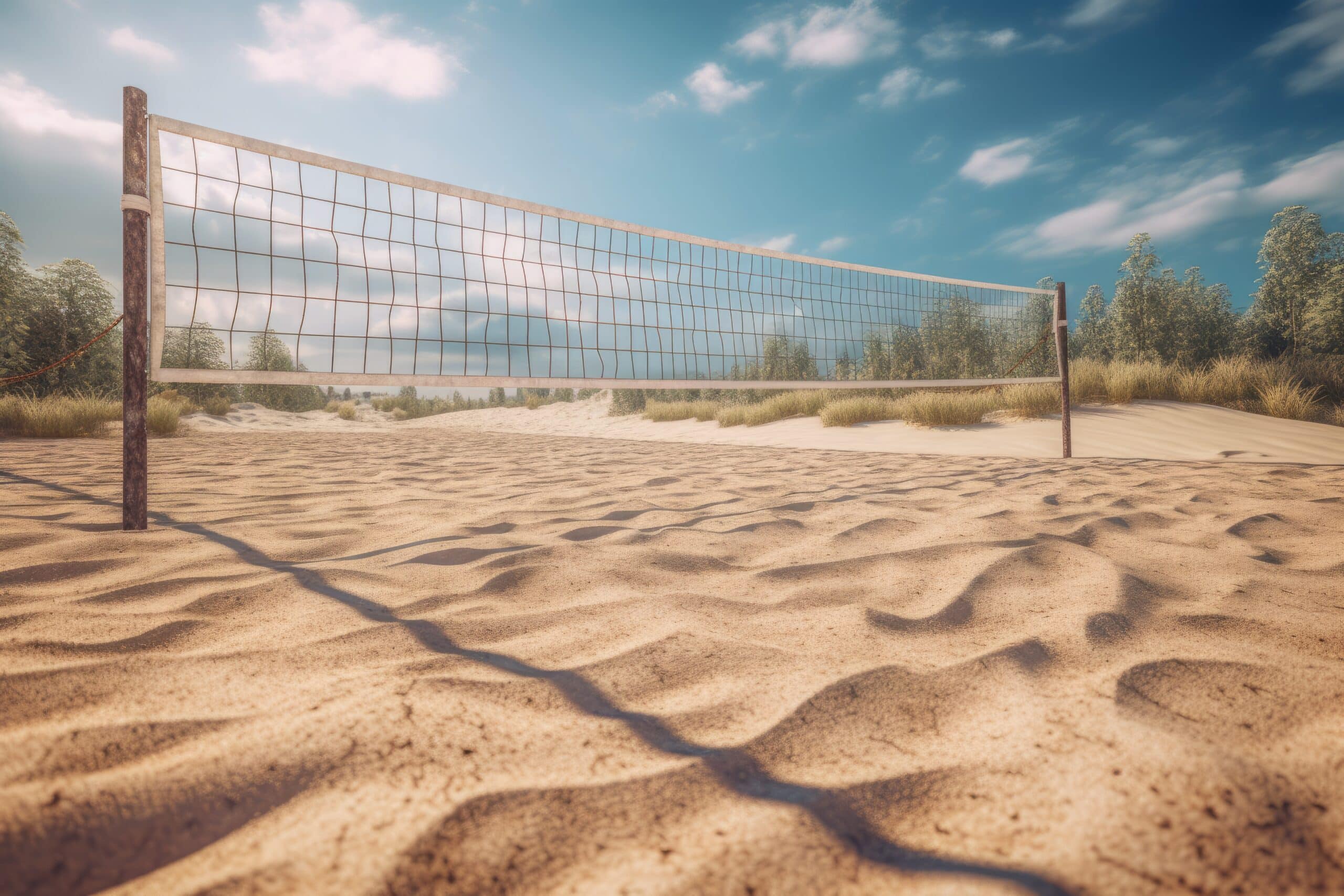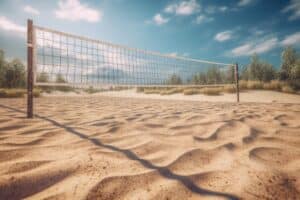What is volleyball called if played in sand?
Key Takeaways
- Volleyball played on sand is called beach volleyball.
- There are several key differences between indoor volleyball and beach volleyball:
- The size of the court is smaller in beach volleyball compared to indoor volleyball.
- The type of ball used in beach volleyball is softer, lighter, and slightly bigger compared to indoor volleyball.
- Beach volleyball is typically played with doubles, while indoor volleyball is played with six players per side.
- The scoring system differs between the two versions, with beach volleyball consisting of a best-of-three games played to 21 points.
When volleyball is played on the sand, it is called beach volleyball. This thrilling sport is a variant of indoor volleyball and is played by two teams of two players each on a sand court divided by a net. The objective of the game is to send the ball over the net and to ground it on the opponent’s side of the court. Beach volleyball is a popular sport played worldwide, with professional tournaments and the inclusion of beach volleyball in the Olympic Games.
Differences between Indoor Volleyball and Beach Volleyball
While both indoor volleyball and beach volleyball share similar rules and objectives, there are several key differences between the two versions of the game:
Court Sizes
One notable difference is the size of the court. Indoor courts are 18m x 9m with a parallel attack line, while beach courts are smaller at 16m x 8m and do not have an attack line. The smaller court size in beach volleyball requires players to cover less ground, resulting in faster-paced and more dynamic gameplay.
Balls
The type of ball used in each version of volleyball also differs. Indoor volleyballs are heavier and made of leather, while beach volleyballs are softer, lighter, and slightly bigger. The design of the beach volleyball allows for better control and maneuverability on the sand.
Players Per Side
The number of players per side is another significant difference. Indoor volleyball is played with six players per side, each with specialized positions, such as setters, hitters, and liberos. On the other hand, beach volleyball is typically played with doubles, where there are only two players per side, and there are no specialized positions. This smaller team size in beach volleyball requires players to be versatile and skilled in all aspects of the game.
Scoring
The scoring system also varies between indoor volleyball and beach volleyball. In indoor volleyball, a match consists of five sets played to 25 points, with the exception of the fifth set, which is played to 15 points. In beach volleyball, a match consists of a series of best-of-three games played to 21 points. The shorter format in beach volleyball intensifies the competition and demands quick decision-making and strategic gameplay.
Other Differences
In addition to the differences mentioned above, there are several other variations between indoor volleyball and beach volleyball:
- Court Surface: Indoor volleyball is played on a hard, smooth surface, whereas beach volleyball is played on sand, which adds an element of challenge and requires players to adjust their movements and techniques.
- Court Lines: The court lines in indoor volleyball and beach volleyball also differ. Indoor volleyball courts have boundary lines, attack lines, and centerlines, while beach volleyball courts only have boundary lines.
- Net Specifications: The height of the net also varies between the two versions. In indoor volleyball, the net is set at a height of 2.43 meters for men and 2.24 meters for women, while in beach volleyball, the net is set at a height of 2.43 meters for both men and women.
- Player Positions: Indoor volleyball has specialized player positions, with players assigned to specific roles based on their skills. Beach volleyball, however, does not have specialized positions, and both players must be proficient in all areas of the game.
- Coach Allowances: In indoor volleyball, coaches are allowed to call timeouts and provide instructions to their players during the game. In beach volleyball, coaches can only communicate with their players during specific moments, such as timeouts and set breaks.
- Ball Handling Rules: The rules for ball handling also differ between the two versions. Indoor volleyball allows for more hand contact with the ball, while beach volleyball requires players to rely more on forearm passes and overhead sets.
- Uniforms: The attire worn by players in each version of volleyball also varies. Indoor volleyball players typically wear jerseys and shorts, while beach volleyball players often compete in bikinis or board shorts.
- Sanctions: The penalties and sanctions for rule violations may also differ between indoor volleyball and beach volleyball, with each version having its own set of regulations and consequences for infractions.
Beach volleyball offers a unique and exciting experience for both players and spectators. The combination of sand, sun, and skilled athleticism creates a captivating atmosphere that has made the sport immensely popular worldwide. Whether you are a fan of indoor volleyball or beach volleyball, both versions provide thrilling displays of teamwork, agility, and strategy.
Related Websites:
For more information on beach volleyball, you can visit the following websites:
FAQs:
Q: What is beach volleyball?
Beach volleyball is a variation of the traditional indoor volleyball game that is played on sand instead of a hard court. It has its own set of rules and regulations specific to the beach environment.
Q: What are the distinct features of beach volleyball?
Beach volleyball has smaller teams and different player positions compared to indoor volleyball. The strategy and gameplay also differ, with players having to adapt to the impact of the sand on movement and ball control.
Q: What are the physical demands and benefits of beach volleyball?
Beach volleyball requires increased muscular effort due to the resistance of the sand. It also enhances balance, agility, and coordination as players adjust to the uneven surface. Additionally, outdoor play exposes players to sunlight and fresh air, providing positive effects on overall well-being.
Q: What is the beach volleyball community like?
The beach volleyball community is known for its social aspect and inclusive nature. It is popular as a recreational activity, attracting people of all skill levels. Additionally, professional beach volleyball showcases a competitive side of the sport.
Q: How can I get started with beach volleyball?
To get started with beach volleyball, find a local beach or facility with sand courts. Many places offer lessons or open play opportunities. Grab a friend or join a group and begin exploring the fun and benefits of beach volleyball!






